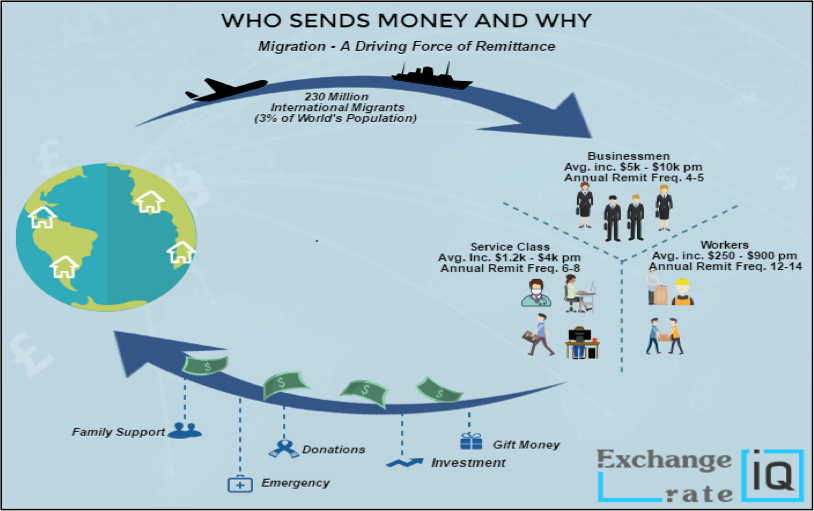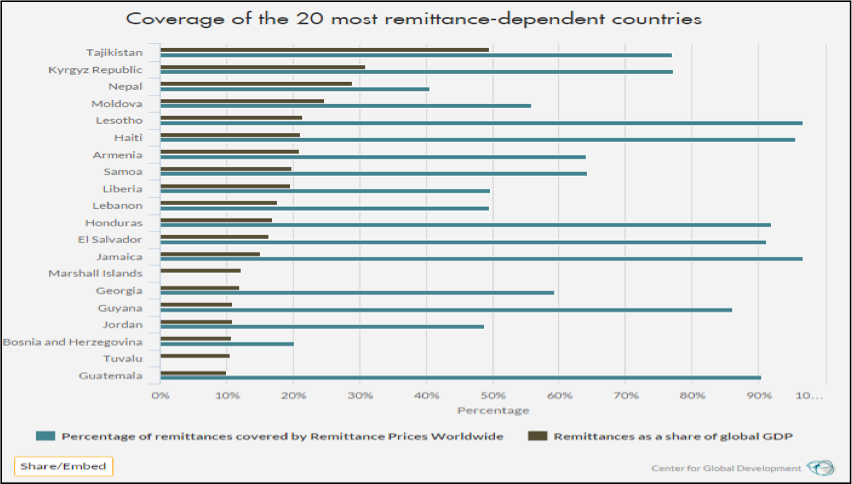Dr. Mohammed Moniruzzaman is a PhD student in a joint Geography and Environmental Studies Program at the University of Waterloo and Wilfrid Laurier University. His talk about ‘Migration and Development’ during our INDEV 101 lecture was primarily focused on migration and food security linkages, more specifically the impact of migrants’ remittances on household food security in Bangladesh.
Migration is the movement of people from one place to another for a long period of time. There are approximately 258 million migrants globally. These migrants often send money, goods and ideas from abroad back to their country of origin. These are referred to as remittances, an important concept raised by the speaker. The figure below illustrates the flow of remittances for migrants living abroad back to their country of origin.

Dr. Moniruzzaman taught us that remittances are a complex phenomenon, having both positive and negative impacts on development. It therefore cannot be labelled solely ‘good’ or ‘bad’ phenomenon. This is because although remittances have shown to reduce poverty and improve educational outcomes and health care provision, economists argue that it is a moral hazard. The reason for this is that creates dependency and decreases economic participation in the home country. Moreover, it creates income inequalities between families that do receive them and those that do not.
The speaker also taught us that in many remittance-dependent countries as seen in Figure 2 below, such as Tajikistan, Kyrgyzstan and Nepal, remittances are higher than Official Development Aid (ODA). Therefore, there exists a definite direct impact of remittances on families in developing countries.

Figure 2: Top remittance-dependent countries in the world (Collin, 2015)
In the case of Bangladesh, remittances have a substantial impact on food security. Using different food security indicators and scientifically validated measurement tools, Dr. Moniruzzaman’s research and talk showed that in Bangladesh, households receiving remittances are better off than non-receiving households in terms of food security conditions. Remittances led to an increase in per capita food consumption. Therefore, the cash remittances received were spent to maintain adequate food consumption levels. This improved the ability of people to acquire sufficient quality and quantity of food to meet household member’s nutritional requirements. Moreover, he highlighted that remittances in Bangladesh helped improve household’s access to important nutritional inputs and provide dietary diversity. The increase in purchasing power improved the variety of food choices. Consequently, it allowed households to cope with shocks that threatened its food security status.
Dr. Moniruzzaman’s talk had a recurring concept—the issue of migration because of poverty cannot be taken at face value. The problem is not migration per se. The real issue that must be addressed is the international socio-economic structure which allows wealth disparities to exist both within and between countries. Poverty is a symptom of this greater and more complex challenge. Alongside assistance and aid, such as remittances and other fiscal support, a sustainable solution must be established to reduce disparities in wealth. Therefore, society should work towards a global reformation that promotes equal livelihood and wellbeing so that aid and remittances no longer become a necessity.
As a group, we believe that the speaker’s talk was relevant to the ‘Migration and Development’ lecture delivered by Prof. Nayak. We have been able to identify how migration, more specifically remittances, contributes to the development of people and countries. Remittances have several impacts on development. They improve educational outcomes and health care access for the families that receive them, while also breaking them out of the cycle of poverty. In the case of Bangladesh, remittances had a positive impact on poverty reduction and food security, which are critical aspects of development. The talk allowed us to draw connections between our knowledge on migration and development trends such as food security and poverty reduction.
References:
Bapna, S. (2016). Remittance 101 – Money Transfer Fundamentals [Photograph] Retrieved from Remittance 101 - Money Transfer Fundamentals
Collin, M. (2015). If the Cost of Sending Remittances Goes Up and No One Is Around to Measure It, Did It Really Happen? [Photograph]. Retrieved from Centre for Global Development